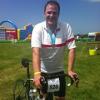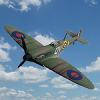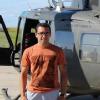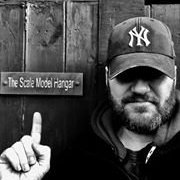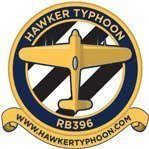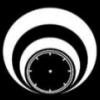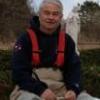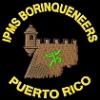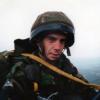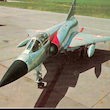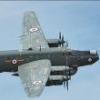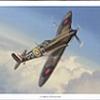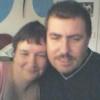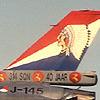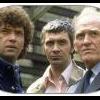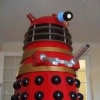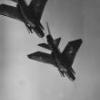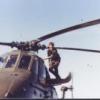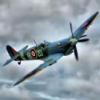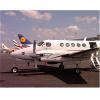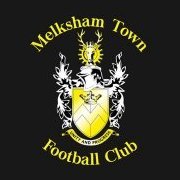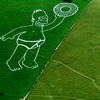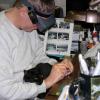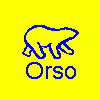Leaderboard
Popular Content
Showing content with the highest reputation on 13/04/16 in all areas
-
Even though the Gulfstream is a G-650, really. New tool Eduard, OOB.18 points
-
Hi fellow modellers, this is my last finished project. It´s the nice PBY-5A Catalina from Academy in 1/72. i added some extras like Eduard PE and Starfighter decals to depict the first allied airplane to land in Guadalcanal in 1942. Althought I don´t think it carried any bombs, I choose to use some on my model. Build is very straightforward. It was painted with Testors acrylics and oil washed. Smoke stains were made with pastel chalks. I hope you like it and every comment and critics are welcomed! Best regards from Uruguay! Ignacio15 points
-
Never been much of a fan of Mosquito models. I think its something to do with the old 1/72nd Airfix kit. It always looked a little clunky when it was on it's wheels. So I tended to avoid it. Then when Tamiya and HK models brought out their 32nd scale kits I thought nah don't want one. Don't like the plane what's the point building a kit of a plane I don't like. Then the more I saw of them being built and the detail on them I thought about it. I saw a few builds that made it look stunning despite being on the undercarriage. Then after watching a few videos on You tube and comparing the HK bomber and the Tamiya fighter I took the plunge. Helped largely by a good discount on the kit too This was a first on a couple of techniques. The first time I used the Montex Masks, the first time with Fabric belts (Yes I know my 24th Hurricane had both of these but I started the Mossie back in November) and the first time i've used artists charcoal and burnt umber to weather the exhausts. The belts were a PITA. But look good. The Montex masks I hated but not as much as Tamiya's decals. Why do they shrivel up so much at the sight of Micro-sol?? Grrr I lost a few that way. Especially round the exhausts on the faired side. But anyway on with the pictures. As best as I can take.14 points
-
After some fighting with the cockpit and the seamless intakes. I ended up having to put intake covers on as when I fitted the intakes there was a large lump on the underneath of the intakes which stopped the lower wing fitting properly. I had to sand it back which left a hole in the intakes on both sides. Not very seamless bit of a waste of money there I think. Not sure what make the intakes were as they came in the kit when I bought it. It's an older boxing of the Tamiya kit the decals were on their way out I think. Some of them started to crack when I put them in water. Especially the Stars and Bars on the sides. I was suprised at how few stencils there were though. There's a grand total of 7 on the underneath. Maybe thats just down to the age of the kit. The cockpit is a mixture of Aires and Avionix with an Eduard IP in the front (still have most of a cockpit left) so maybe another Tomb will be on the cards. I do need to refit the sensor probes on the tail (they snapped off during fitting the undercarriage) but I have a spare tail to remove them from11 points
-
Hello friends, just finished my second kit of the year. The kit has a great amount of detail and the fit is superb. The HTS pod comes from the Hasegawa weapon set (the only one available for the left side afaik). I used Gunze, Model Master and Alcald paints and some aftermarket decals (the ones from the kit are the blueish version, I like the gray one the most). Other than that, the kit is straight from the box. I opted for an inflight pose as in my opinion it looks very aggresive and natural. Hope you like it!10 points
-
Hello all, this is my latest completion, Accurate Miniatures 1/48 Grumman Avenger. This kit is no shake and bake model, but with some effort it can be built without too many drama's. I chose to build a subject close to my heart: This Avenger is JZ670 "AHBX" of 707 Squadron Fleet Air Arm. She was an Avenger Mk.III and she can be seen in the photograph below during her time at HMS Ringtail in West Lancashire, England. In an attempt to bring my Avenger up to Fleet Air Arm Spec, I scratch built an observers position behind the pilots seat. This involved installing a seat, fold out table and instruments. I did the best I could, but I have no idea how accurate my efforts have been. On that note I would like to say thanks to the forum members here who went out of their way to give advice and share references. I used the Freightdog Models decal sheet "Brits at Sea-Part 1" for the 707 sqn markings and I mixed my own shade of Gloss Sea Blue from Tamiya acrylics. I like the colour, again it may not be "spot on" Here are some photo's of the finished model, I hope you like it! You can see more pics of this build and it's W.I.P. on my blog. http://thescalemodelhangar.blogspot.co.uk10 points
-
This is my latest build. Revell 1:48 Eurofighter Typhoon single seat RAF 29Sqn Display Aircraft from the 2014 season. I have had this in my stash for several years and wanted to build it using the xtradecal Typhoon display decals to depict the 2014 display aircraft which I have always thought was stunning. I purchased the Olimp resin seamless air intake and exhaust can set so I could build a clean aircraft along with with the BigEd PE set. The build went relatively smoothly with the resin sets only needing some slight filling and sanding. I was impressed with the fit and detail of the it, only adding some scratch building in the wheel wells to add interest and depth. The Eduard set in the cockpit is a must as it really sets it alive and cannot be beaten. As usual I painted the aircraft using Vallejo Air colours finished off in a satin coat with a light wash and weathering as these aircraft are usually presented as pristine. I wanted to show the versatility of the aircraft and to do this I thought adding an array of ordnance would do it nicely. This particular aircraft would not have been operational in 2104, but would have continued to fly training sorties so to add some colour and interest I have loaded it with a variety of training ordnance. This is a sort after, discontinued kit and hopefully the re - issue in Sept will bring some more great examples of this single seat aircraft.9 points
-
Hi Folks here are some photos of my recently completed Eduard 1/48 Fw190 D9 Weekend Edition completed as Red 18 from I/Erg.KG(J) found abandoned in 1945. The kit itself needs no introduction I'm sure, this one was rescued from my stalled projects shelf where it had lain for a few years with only the first stage of construction having been completed. I decided it was time it was completed so set about it in March. There is a WIP here for anyone how is interested http://www.britmodeller.com/forums/index.php?/topic/235000419-eduard-fw190d9-red-18-iergkgj-completed/ The kit was painted using Mr Paint acrylics from Slovakia, a first use for me and I am very impressed with them. Another first for me was the use of AK Interactive's Extreme Metallic paint for the NMF underneath the wing, this was also excellent stuff to use and I'd happily recommend it to anyone. The national markings and unit number/markings were painted on using Montex Masks with the stencils and serial number coming from an EagleCals sheet. In addition to the Quickboost exhausts and HGW seat belts I also added some details including the nav lights made out of stretched clear sprue, the brake lines, aerials and the undercarriage indicators on the top of the wings. Brass rod was also used to replace the outer section of the cannon barrels. My thanks to the BMer's that helped me with my questions about this aircraft and it's colour scheme, as always I'm humbled by the generosity of my fellow members. Any comments or suggestions welcomed Duncan B9 points
-
Hi All, Here is my recently completed Italeri Wessex 1 Commando which I thoroughly enjoyed making. Lots of small extras have been added to enhance the kit and note the early aerial fit. I found some photos of the actual machine which was sadly lost with all onboard after a collision with sister ship.Revell Aqua used throughout with Beige 36314 and Bronze Green 36165 for the camo which I think look spot on. Who would have thought that a company would release 3 different versions of the Westland Wessex so thanks to Italeri ! Hope you enjoy this one as much as I had making it! MODeller9 points
-
Well this was one of those "Quick Builds" That got fit into gaps between other projects and life events and 3 years later finally emerges as finished.. I love how shes come out Its my attempt at XL426 as she was in the VDF days battered and faded to hell just before handing over to the more famous VDF bird XH558. Hope you enjoy its my first post in RFI for ages now. Rob8 points
-
Hi, Here is my Spitfire Vb it's pretty much OOB apart from some Eduard PE seat belts and some Ultracast Exhausts. Painted in a mix of Tamiya and Vallejo acrylics. I also had ago at masking and painting the upper wing Roundels and tail national insignia... Thanks for looking... Cheers Plasto...8 points
-
A little bit on Project Bullseye considerable controversy has reigned over whether the B-58 was ever painted in the Air Force's distinctive Southeast Asia camouflage pattern. As noted on p.130, the scheme was enunciated in Tech Order 1-1-4, but it remains unverified as to whether it ever actually was applied to an aircraft. David Menard, who works in the Air Force Museum library in Dayton, Ohio, has studied this debate for many years and has corresponded with a number of legitimate authorities on the subject. Among these are Lloyd Jones, who submitted the following letter and associated correspondence: "A model builder friend of mine was asked by one of his occasional friends if he could build him a model of the Hustler for display in his home. My friend consulted with me as to decals, markings, and colors. I said 'Why don't you blow him away with a camouflage version?' He didn't think he would appreciate it, so went ahead and finished it in the standard scheme. "When he delivered the model to his friend, he commented that I had suggested he paint it in camouflage and the friend said, 'I flew the camouflaged one'. He then sent me the enclosed sheet on 'Project Bullseye', and confirmed the serial number, 59-2428. "He said only one plane was painted and it was kept under armed guard in a hangar when not flying. No one was allowed to photograph the plane, although he indicated he had tried. The aircraft markings were typical of the SEA with red numbers on the vertical and on the nose gear doors. The national insignia was on the fuselage and upper wing. No comment was made about rescue or servicing marks." Lloyd's friend went on to write the following description of the Bullseye Project: "The Bullseye Project was a highly classified program directed by the USAF Chief of Staff, Gen. Jack Ryan, to test the feasibility of the use of the B-58 as a 'pathfinder' for the F-4 and the F-105 in an attempt to improve the bombing accuracy of those aircraft on selected targets in N. Vietnam. "Gen. Ryan was very displeased with the bombing tactics being utilized by PACAF and felt the sophisticated radar bombing tactics utilized by SAC would be an improvement over the 'dive bombing' methods being employed in 1966-67. The dramatic loss of aircraft using these tactics was the result of the exposure time the aircraft incurred when they climbed to a bombing altitude to identify their targets. It was thought that low altitude, high-speed entry with no climbing exposure would cut the loss of aircraft. The concept was to use a B-58 as the lead ship with four chicks (F-4 or F-105) on his wing. The bomb run would be conducted by the B-58 and all stores would be released on his command. Mutual ECM support was a benefit as all five aircraft would be using their individual electronic equipment to jam enemy radar systems. The B-58 was selected because of its speed capability and maneuverability, as it could not only stay with the two fighters, it could go faster, was more stable, and could turn inside either the F-4 or the Thud'. It also provided an excellent radar system, and was manned by the best pilots, radar navigators (bombardiers), and defensive systems operators (DSOs) in the Strategic Air Command. "The actual tactics to be employed were to have the aircraft start at an intermediate altitude (18,000 ft) and work down. All releases were to be made in straight and level flight, with no maneuvering, on the bomb run. Each day's effort would be evaluated and the altitudes would be changed (lowered) to determine the best bombing, as well as the most surviv-able zones. "The tests were conducted at Eglin AFB, Florida on selected ranges in the spring and early summer of 1967. Aircraft from the 305th BW at Bunker Hill (later Grissom) AFB flew with the F-4s solely to test formation tactics and bombing accuracy. The B-58s from the 43rd BW at Little Rock AFB flew with the F-105s and also were concerned with mutual ECM effects. As was noted, altitudes would start high and work down to 'tree-top' level. Avoiding detection would be a prime requisite for this exercise, therefore the lower the better. Speed was another factor! All drops were to be made as close to a Mach 1 threshold as possible. Most drops were made at .94 Mach (around 600 kts at the lower levels) with only minor variations. All drops were live! "The B-58 had four 'hard' points (two on each wing) where bombs could be slung. Mach .94 just happened to be 'normal' cruise for the B-58. Turns off target had to be fairly gradual and measured as the B-58's large delta wing gave it a distinct advantage over either fighter. After the turn, speed could be increased above Mach 1 if needed, to exit the 'lethal SAM' areas. This tactic was not employed during the Bullseye tests to my knowledge. The Bullseye project was complete success, with bombing results at the lowest altitudes better than those at the higher altitudes, and circular errors (CEs) in a highly destructive range (less than 200 ft). Detection was minimal and mutual ECM proved extremely successful. "Upon completing all the tests the project director indicated to the crews that the Chief was highly encouraged by the results. It was apparent to everyone that crews and aircraft would be deployed at an early date to U-Tapao Royal Thai AB in southern Thailand, which was a SAC base housing the 307th Composite Wing. Paint was rumored to already be at the two B-58 home bases. "Unfortunately, the concept was killed at a level above the Chief of Staff, USAF - probably the Secretary of Defense. It was later divulged that Mr. McNamara felt it would not be a politically good move and could result in a demoralizing public outcry if a B-58 were to be lost in combat. It also was felt that it would provide the enemy with a rallying point if they were to capture a crew member from the cream of American aircraft. The B-58 therefore was never used in Vietnam despite the fact that it probably was one of the best-suited aircraft for that environment." Monogram's old faithful. very little filler, lots of problems with xtracolour SAC Tan, but eventually sorted out. 4 x 2000 Mk 84s on the hardpoints and Fox One decals to complete the job! Enjoy.8 points
-
I believe the intent was to use student pilots in the Gnat -- the Sidewinder would detect a target with the IR seeker, then fire the Gnat at it. The plan was abandoned because the Gnat's guidance system proved unreliable.8 points
-
evening ladies ah thank you - that is reassuring - thankfully that bulkhead is what I am working on now and is in one piece.. ..I started the frame that the instrument panel bolts to - frame 8 - again it is a PE sandwich with some plastic stock as a spacer. I also had the ring of rivets made and a strip of paired rivets to go around the inside edge.. ..I had a look at the panel itself - this is based on the 1/24 version I have coming out in a few weeks... ...I started to set out some of the detailing - two brass turned dimmer switches at the bottom, along with a pair of switches for the coil & starter. There are also a couple of raised bezels and a folded gauge for the increased fuel tanks in the FR version.. ..also started making the oxygen control thing - I made a depression in some plasticine with an allen key and added some dips with a rounded cocktail stick to get a shape I could cast the tiny funny shaped wheel from in resin. There are a couple of glass tubes too so made these with clear stretched sprue.. There is alsoa tiny flap selector about 2mm square.. ..lastly I tried getting my printer to run off the 1/24 decal master scaled up to 1/18 and printed on clear film - I painted the back an ivory colour and am experimenting with printing on the reverse so it 'glazes itself'.. I may also try doing the needles on a separate layer of film to give some depth.. ..and this dry fit is where I am at.. TTFN Peter8 points
-
A quick couple of pics showing the first two Crusader prototypes done. In the backround are the other two I'm working on. The XF8U-3 Super Crusader and the GMC are mine. Here's a link to the building posts. http://www.britmodeller.com/forums/index.php?/topic/234985180-172-xf8u-1-crusader-prototypes-138899-and-138900/and here's the link to the two in the backround 140444 and 140446. http://www.britmodeller.com/forums/index.php?/topic/234993879-172-f8u-1-crusader-140444-and-140446/7 points
-
Not very proud of this one, but at least it saw the light after being almost smashed a couple of times. Lots of putty used despite its size, horrible fit and I struggled with the final pose (broke the skids many times) and blades. Tiny monster. I like the helo so much anyway, and I finally have a Bo-105 in my collection. Kit straight from the box with Gunze paints and Future/Klear used. Just noticed I forgot to paint the exhausts, guess it can wait until the next overhaul. Please show mercy, it has gone through so much stress already Thanks for looking.7 points
-
Hi everybody; a small update, as I managed to do something last night. Variramps: I decided to go with a bit more of a light coat to blend in the darker areas, because looking at real AC pictures, you can see the thousands holes only when looking up close, so I got this I then completed the metallic parts, by airbrushing Model Master Burnt Metal on the arresting hook, stabialtors and main AC tail. Here are some shot before and after buffing Hopefully this should show the tone variation Overall That's it for now, comments welcome Ciao7 points
-
Matchbox kits have always provided a wide range of subjects, many of which were not available elsewhere. It's a shame that the present marketplace seems to demand ultra-detailed models which leaves little place for the basic, low-priced and simple to assemble item that could be completed by modelers of every skill level. I only wish that Matchbox were still releasing new items. Here are a few that I've done over the years;7 points
-
Hello. I'm New to Britmodeller but have been back building for a year or so after the mighty break of about 30 odd years. This here Fish is my 4th build since the come back. I stalked this sight for a while during the build of my Mosquito and Messerschmitt but decided to jump in a month or so ago and do a Work in progress of my latest build. I have no real connection to the Swordfish other than I have always loved this kind of plane and have never had the opportunity to build one. I didn't really research much before I started. However during the build I was eagerly watching other builds and seeing how involved you all get about paint, weathering, dates, serial numbers etc. . "The Baron" in particular was and still is a brilliant WIP for me as we are building our fishes in parallel. Any way after many ups and downs, strangeness and charm I managed to get it completed, I'm really happy with the result but can't help but see the myriad of flaws that I hit during the build. the most important thing however is that it was fun, I hope whoever watched the build thought it was fun too. Posting my progress here has been such a help to the build, I can't actually wait to get stuck in to my next one, so keep em peeled it won't be long. Bloody hell I do waffle some times, I hope you like the pics. There are so many excellent modellers on this site I hope that My little Fish passes muster. Here we go then. There is rather a lot. That's all folks. Thanks to everyone for all the great feedback and support along the way. Here is a link to the Work in progress. http://www.britmodeller.com/forums/index.php?/topic/234999461-my-first-wip-148th-scale-tamiya-fairey-swordfish-mk2/ All the best and Happy modelling you lot. John "The Spadgent"6 points
-
Excluding 1/350 aircraft for ships, this is possibly the smallest model I have completed. This is the excellent Valom 1/144 Sopwith Pup. The moulding is very crisp. It includes a cockpit, which is very small and didn't quite fit without a shave around the edges. It includes 4 markings options, which give a variety colour options. The wing struts, and landing gear are photo etch, which was really easy to use in this scale. I frayed 'Rig-it', which is a lycra thread, down to a single thread and used super glue to apply the rigging. It took about 3 hours to rig. I'm pretty impressed with the model. It was a 3 day build. Now, Back to something full sized. Regards, Alan6 points
-
Hi Folks Found the Seahawk behind a pile of boxes in the loft,don't know how it got there,a good wash later and here it is. This is the Trumpeter kit and is finished as one which i photographed in the Abbotsinch scrapyard many years ago I believe it was operated by Airwork Services at one time before its retirement. The F86D is the Monogram kit finished to represent an aircraft from the 97th Fighter Intercepter Squadron used at Wright Patterson AFB in the EARLY 50s6 points
-
My finished Tamiya 1/35 M4A3 Sherman 105 howitzer. Only a metal barrel was added, otherwise is OOB. Kit was painted in Black and White as explained by Jose Luis Lopez in his Book Black and White Technique. Finished details with Ammo products.5 points
-
Some very subtle weathering with exhausts and oil streaks, otherwise clean.... Final assembly with the Aes, slippers, pods etc..... With her 'distant cousin' !! Enjoyable build, with a limited kit (plus limited builder skills!) that still shows the elegance of 'Britain's last bomber', especially in this 1960's Royal Navy Fleet Air Arm livery........5 points
-
Thanks Guy. I don't usually mix the super glue and baking soda as it tends to dry too quick for me so I fill the gap with superglue then sprinkle on the powder to speed up the drying, maybe if I use talk powder it will be better so I'll try that! Ok guys I have been finishing some of the nitty gritty bits in prep for paint, bit of an enthusiastic update with all the pics but thought I'd show most of the little things I have done. Being in the construction phase I decided to build up both the Aires seats. I've never used PE like this before and wow it was fiddly making up the belts on the 1/32 seat, new admiration for you guys who use a lot of the PE stuff! Still some bits pull handles missing etc.. but I'm happy with them and look forward to some paint. Because of these I decided to make the canopies open. I just copied a photo of an seat in use for the belt positions and added some things to get the correct lengths. Some details added to the inner canopies, I didn't want to risk adding anything to the 1/72 front one in fear of getting glue all over it, its pretty tiny for me. and painted After some great help form BM member Spooky56 (thank you! ) I added some details to the front and rear cockpits. The box in the rear bulkhead of the Marine -G is definitely different to what was found in the Airforce version which I believe is the LEADS 200 system. Maybe it houses some similar system but it looks different. A rear folder (pic here-http://s540.photobucket.com/user/Dhollan/media/Dhollan4/d29fcb1f.jpg.html) wasadded and books/clipboards I have seen in photos going on the front coaming. 1/32 1/72 Then painted. I tried to weather the rear with a rather patchy sun bleached look. 1/72 Still quite a few details to add to the cockpit area but I'll add them after painting. Finished the bulged gear doors on the 1/32 jet and also found out the locks actually had covers over them so made them too since I've done the rest of the FOD guards. This Viking jet will be clean therefore I drilled the fuel tank holes on the tips, they need some lights (as does the airframe) but I'll make them later. The control surfaces were fitted again. Flaps and LE slats set at 15 degrees takeoff position via a template. The rudder was deflected slightly and the tail pitched up as seen on some photos of these jets. Hopefully deflecting all these surfaces makes a clean airframe a bit more interesting later on. I sprayed some Halfords white primer on directly from the can (bad idea, forgot how rubbish I am with aerosols!) and then spent a while polishing back up the surface for paint. This surface prep made it a little patchy in places but should be a solid enough white base, maybe it well help with the colour tones . It is Long! Back to the 1/72 version I made a basic error in that when the F-104G carries the twin Aim-9 launchers it cannot carry the central fuselage pylon I made, oops so I'll save that for maybe a nuke armed one. Anyways I added the two sway braces between the underside launchers And built up the weapons. The Kormorans are from Eduard, I got a bit bored of making things so just bought them instead. The pack comes with 1 Kormoran 1 and 1 Kormoran 2, so you have to buy two packs for a pair of one type which is a little off from Eduard but no worries as I'll build a Marine Tornado later on with the spare two missiles. The Aim-9Bs are from Esci F-5s and were detailed up a bit with new fins, motors and the seeker head covers that I'll attach some RBF tags to. Only choice now is to decided to paint them white (live) or olive for a drill I primed it with Tamiya fine grey just decanted into the AB, such a no fuss way I'll use it more in the future. Polished up a little too ready for the Weissaluminium undersides. The pair. Still a few things to do such as attaching and filling the canopies, pitot probes etc..but I won't bore you with those so consider this the last update before you see them painted! The Brassin wheels also arrived and they look very impressive, glad I went down that route Thank you for any comments or advice (or any suggestions) and see you guys in a few weeks with a paint update. Cheers, David.5 points
-
Thanks Keith - persuasion? Always works on me... The transfers arrived today (thanks again for the link Rick) along with the 'extra purchases' - the space I use to limit my stash is now full, again. With the arrival of the serials I now have no excuse to get on with this: Untitled by Ced Bufton, on Flickr Stencils and fiddly serials. Yuk. And I think I'm coming down with something. Pathetic excuse.5 points
-
5 points
-
After many trials and tribulations including a full stripe down from almost finished here is my tamiya 1/72 mossie fbvi in 418sqn RCAF markings http://www.britmodeller.com/forums/index.php?/topic/234994307-finished-pbs-project-no2-172-tamiya-mossie/page-25 points
-
HI Chaps, starting post, pics to be added of sprue shots. I will be building the first of the six typhoon submarines, launched in 1980 and in operation with the northern fleet. The kit is the Alanger Typhoon, not to be confused with the hobbyboss botch job. Although no longer in production this is still one of the best kits of this beast. All the best Chris4 points
-
Hi All, This will be my build for this GB. It will be the Hasegawa F-104G kit with some aftermarket decals and a small PE set. The kit; The decals; Content of the kit: The PE; This will be the version I'm planning to build: Only a couple of days and we can start!!!4 points
-
Started this a week or so ago, and I'm sure everyone is busy whittling away on theirs, but here's mine for your interest. Here is a WIP of the new Airfix 1/48 Metoer F.8. At the time of writing I haven't yet decided on the final scheme, but I have an idea, and it involves one of the options on an Xtradecal sheet (which I haven't got yet!) But meanwhile... I ordered the kit from the Big H, where I happened to notice that the Eduard detail sets were available at the same time. I snapped four up, these catering for the engines, the cockpit, the undercarriage, and lowered flaps. Didn't bother with any masks as I can do that myself. So, starting with the cockpit.. Eduard provide replacement and enhancement parts to make the cockpit a lot busier, so here you can see the assembled cockpit parts with various items sanded off and replaced with the etched items. Painted black, a lot of these details are lost in the depths, to be brought to life with some dry brushing. The control panel is good, but not very colourful. However, once completed, I represented glass dials with drops of Glue n Glaze. I actually left some details out as they were either a pain to fit in, or got in the way of other items later on. As I say, it is a busier cockpit, but there is still room to add more. I suspect someone will make a resin pit at some stage. For the seat, I used the Airfix main parts, and added numerous bits from the brass. The belts again are adequate but again, either resin ones or fabric ones could be better. Airfix would have you paint the cushioned areas blue, but I had doubts about this and went for a couple of shades of khaki. And yes I did paint it blue first! Seat added to pit Added a parachute to the top of the seat from putty, and a cord from plastic rod. There is also some very thin pipe work I added from more rod underneath Added a couple of guns, and painted with Alclad shades of metal, after the bay was sprayed with Alclad semi-Matt aluminium, and washed with Humbrol washes. After this, the fuselage was joined together, after first opening up a couple of holes needed later in the build. This was set aside to dry. So, next step, tackle the undercart bays. The brass parts look intimidating at first, but are designed in such a way as to hopefully go together in a straightforward manner, so long as you take your time with them The sheet provides not only the bays, but also door inserts and airbrake parts. The first job was to sand off the relevant Airfix details and attach the sidewalls to the bays. This was quite easy, though I still managed to lose one tiny piece, so replaced it with a length of plastic strip. And then, onto the roof of each bay. The Airfix parts are quite well detailed here, with pipe work portrayed under the cross members, and other boxes and pieces. The brass parts, at first, look quite fragile. The theory being you first glue 5 frames in a row, equally spaced, then add three more going across these to interlock (the frames have tiny 0.5mm slits in them where they need to interlock) so what I found was, it is easier to apply glue to one end of each frame, add them all to the roof, then adjust the free ends til the interlocking frames sat down on all crossing members, then put a few drops of superthin superglue on each joint, which would flow along...actually pooling in some gaps which kind of ruined the finished effect later. But the whole structure, when finished, was remarkably strong. It needed to be as it was a tight fit inserting these into the bays So here we have the two plastic bay roofs, one with the detail sanded down ready for the etched And here are the replacements under construction. So, after some fettling, here's how the first one looked. I had to grind down the edges a tad with the dremel as the brass parts are very precise and any misalignment means it doesn't go in. So what I thought was, place the brass roof in the opening first, then add the plastic roof above it with a dab of super glue gel, press it into place, let it go off then remove the whole combi to insert the second, smaller brass roof section. This is what needed the most trimming, but once completed, the overall fit was snug, as you can see here And with lessons learned from the first one, I knew what to expect with the second... But here are the two inserted. The bays were primed with Mr Surfacer before starting the next job. Next job, I decided it would be wise to cut out the plastic flaps before the wings were joined together. This took a while using only swipes from a new blade These are the flaps flat-packed. You can see the design and how they fold up, which is such a time saver. So, I set to and put them together ... You need a couple of lengths of 1mm plastic rod to put through the holes at the front of two of the flap units. Primed, and with two of the door panels added Later, after a coat of Alclad gloss black base And Alclad semi-Matt aluminium And that's where I'm up to til next week.4 points
-
First Order Stormtrooper Star Wars The Force Awakens Bandai 1/12 Here's Bandai's First Order Trooper, finished as an Officer, courtesy of the added shoulder pauldron. The base roughly represents the forest setting on Takodana during the attack on Maz's castle. You may notice the small snake (who I'm calling Marvin) hiding in the undergrowth. He may remain on the base, or he may slither off in shame at the poor quality of his sculpting. The wip's here Thanks For looking Andy4 points
-
Hello friends My latest build, the tiny Mig-15 UTI in Algerian marks. For now i can only show a couple of pics. I hope you like it Kind regards Vitor Costa4 points
-
On Agust 4, 1940, four 80 Sqdn Gladiators were assigned to escort a Lysander of 208 Sqdn on a reconnaisance. YK*I/L8009, flown by F.O. Wykeham-Barnes, was one them. They encountered a group of Italian Breda 65 attack planes, escorted by a larger formation Fiat CR-32 fighters, biplanes of an older vintage than the Gladiators. Wykeham-Barnes shot down one of the Bredas, then was attacked by the escorting Fiats; he was creditted with downing one of them before his own machine was shot up so badly he took to his parachute. One other 80 Sqdn pilot claimed a Breda and a Fiat, before also being forced to bail out; another Gladiator was shot down with its pilot killed, and the one which remained crashed in attempting to land. Wykeham-Barnes' Breda was reckoned the first victory by an 80 Sqdn Gladiator. This model represents YK*I/L8009 as it may have appeared shortly before its destruction. There is some uncertainty regarding its appearance at that time. This owes to photographs of 80 Sqdn. Gladiators taken early in 1940 showing upper surfaces in two dark grey tones without much contrast, and photographs of 80 Sqdn. Gladiators taken later in the year showing uppersurfacs in two highly contrasted grey tones, one dark and one light. Further, photographs which show the upper surface of the upper wing of an 80 Sqdn. Gladiator show at least two seperate patterns employed, one matching well with the standard, the other not. Some have taken the later, high contrast photographs to indicate employment of a local scheme of Dark Green and Light Earth. The Osprey 'Gladiator Aces' monograph depicts several 80 Sqdn. Gladiators, including YK*I, in these colors, and so does 'Britain Alone' by Paul Lucas. The Warpaint Series number on the Gladiator does not, sticking with Dark Green and Dark Earth throughout for wartime Middle East Gladiators. The standard Temperate Land Scheme of Dark Green and Dark Earth was the official standard for camouflaged aircraft in the Near East at this time. There had been official trials of other schemes in the area recently, and also some local experimentation (this being permitted to an extent). At least one bomber squadron in Middle East Command had, for much of 1939, flown planes on which the Dark Green had been over-painted with something matching Light Earth. One of the trial schemes tested was a 'Modified' Temperate Land scheme, in which Dark Earth was replaced by Dark Sand (as near as can be told a sort of grey-brown with a yellow tinge), while the lower wings and sides of biplanes were still in Light Earth and Light Green. This scheme was considered to have wide applicability, but was dropped at the outbreak of the war for the standard Temperate Land on all overseas commands. Interestingly enough, this Modified Temperate Land scheme employed a different pattern on the upper wing, which matches well the 'non-standard' pattern some 80 Sqdn. Gladiators display on their upper wings. There is no record of a 'green and tan' scheme being employed in 1940, but most early-war records of 80 Sqdn. were lost in Greece. There is some evidence that later, some aircraft operating in Palestine and the Nile Delta were given a 'green and tan' scheme. One further possibility is simply that paint applied early in the year had deteriorated. Dark Earth, if over-thinned, is reported to have dried lighter than standard. Dark Earth in some formulations was especially prone to fading to a lighter shade under sunlight. This seems to me the most likely explanation for the different appearance between early and late photographs of 80 Sqdn. Gladiators; it is certainly the most parsimonious. The process of 'fading' in Dark Earth was formation of a white layer near the surface. I do not know if this would have greatly increased the reflectivity of the paint. Light Earth reflected much more light than either Dark Green or Dark Earth, and since the high contrast appears in photographs using both ortho and pan stock, reflectivity, and not color, must account for the 'brighter' areas. The kit is the 1/72 Airfix Gladiator. I added secondary bracings in the cowling, the radio mast on the wing, and the damper rods in the rigging. Identity decals mostly from the XtraDecals Gladiator sheet, but I damaged one serial run, and had to reconstruct from an old Modeldecals serial sheet. Roundels are from an old Pavla Gladiator sheet, as I liked their color better, and they had a yellow ring for the fuselage roundel. I finished this model to a color-spread in 'Britain Alone', and tried in my mixing colors to get something that could pass as faded Dark Earth or Light Earth, taking as my mark the rather light-ish Dark Earth in color photographs of the Shuttleworth Gladiator on the cover of the Warpaint Series Gladiator number. If I had known all I know now, I do not think I would have followed that profile, because I suspect it does not have the upper wing pattern right. It should probably have been either standard, or the 'center vee and parallel swathes' pattern of the Modified Temperate Land scheme. Building this was was a sort of recce in force to discover possible difficulties ahead of future Gladiator builds, which I want to be especially certain I get right. I like the kit a great deal. It does need attention, but if this is given, it goes together beautifully. Most mating surfaces have a bit of a 'lip' at their edges, and need to be sanded down flat; this is particularly important in regard to putting the lower wing on, and i fitting the strut ends into their sockets. Small parts need to be carefully sawn off; you really do have to follow instructions in assembling the motor and cowling (though you can treat this as a separate assembly, rather than starting with the engine fastened to the nose). The fit of the motor itself to the nose was the only really poor fit in the kit. As someone who does mostly open-cockpit subjects, and is not too comfortable with canopies and such, I appreciate the fit of the canopy in this kit. If you are careful in initial fitting in regards to the roll-over structure, and take just a hair off the front and rear of the canopy, it will be practically a snap-fit. The best way to deal with the 'X' between the interplane struts is to score it a bit with a saw before you assemble the wings, and then to heat an old X-acto blade and melt through the scored point. You can the nip off the rest and clean any remnant with no trouble at all. If you try to saw all the way though you will find it extemely tedious, and might slip; if you try to break it with a nipper you will pop joints.4 points
-
Today I got another coat of gloss varnish on over the decals and while that was drying I masked up the blade leading edges, again I thought liquid masking was the best approach for the blade ends: I then started to apply a Paynes Grey oil wash to the varnished parts: Here's that finished with perhaps a little minor tidy up still to do: I'm now on target for final assembly in the morning. Bye for now, Nigel4 points
-
Kit: 1/72 Frog Hawker Siddeley Buccaneer S.MK.2A Subject: Hawker Siddeley Buccaneer S.MK.2 XN980/23, 801 Naval Air Squadron, Fleet Air Arm, Royal Navy - operating from HMS Victorious, 1966. Details: Modelled as per reference pics from CMR Models and decal sheet Misc: Mr Color Paints, Humbrol paints, Xtracolor paints, Airfix Buccaneer slipper tanks, X22/Mr Leveler Thinner gloss, artists oils, decals from Model Alliance MA 72-177, Blackburn/HS Buccaneer and kit decals, lots of tamiya tape... WIP Link: Here4 points
-
Thanks Giorgio If applied quickly and not moved around too much they do settle really well. And thanks Simon... I listened to that for, ooh, about 40 seconds - LOUD! Thanks Cookie, very kind I'm glad the C1s are correct - see below... I initially applied 50" roundels to the fuselage as well as the wings but they were too big (rush to reference shot, rush back to model, rip off the roundels before they dry) so they were replaced. Ah, quotes don't contain the original quote then... but we know what you mean. So, 'tis done: Nerves shot by Ced Bufton, on Flickr Thank you. More applause please... I need it after applying the 'EN409' to both sides. You do know, don't you, that the transfers recommended by Rick (thanks Rick) have to be cut from the sheet and the individual letters / numbers have to be trimmed if you want the numbers to butt up against each other properly. That makes them really tiny. If you breathe there's a danger that you'll blow the tiny bits of paper all over the place. And then they have to be removed from the backing and applied, one by one, in a straight line and evenly spaced and... GAAAAHHHHH. Still, done now and I'm quite pleased with them. If there in the wrong place (governed by the W/T stencil on the other side) then please, please keep it to yourself, there's a good chap4 points
-
4 points
-
This is my latest build. Revell 1:48 Eurofighter Typhoon single seat RAF 29Sqn Display Aircraft from the 2014 season. I have had this in my stash for several years and wanted to build it using the xtradecal Typhoon display decals to depict the 2014 display aircraft which I have always thought was stunning. I purchased the Olimp resin seamless air intake and exhaust can set so I could build a clean aircraft along with with the BigEd PE set. The build went relatively smoothly with the resin sets only needing some slight filling and sanding. I was impressed with the fit and detail of the it, only adding some scratch building in the wheel wells to add interest and depth. The Eduard set in the cockpit is a must as it really sets it alive and cannot be beaten. As usual I painted the aircraft using Vallejo Air colours finished off in a satin coat with a light wash and weathering as these aircraft are usually presented as pristine. I wanted to show the versatility of the aircraft and to do this I thought adding an array of ordnance would do it nicely. This particular aircraft would not have been operational in 2104, but would have continued to fly training sorties so to add some colour and interest I have loaded it with a variety of training ordnance.This is a sort after, discontinued kit and hopefully the re - issue in Sept will bring some more great examples of this single seat aircraft.4 points
-
The Squadron Crest looks great, would you consider a brass etched plaque with a personnel attachment inscription near the badge to show the significance of you modelling this aircraft? I did one for my HMS Invincible with my old cap tally, ships crest badge and a short dedication to the ships crew and air wing embarked when I was on her. Only a thought.4 points
-
Assistant Driver gets painted up next. Again, I'm no figure painter , wish I was but these are okay Cheers Dan4 points
-
4 points
-
I made a very small start on this -- clipped some parts off sprues, managed to lose(!) the rather-wretched-looking-anyways resin wheels the kit includes (and if you are the sort of person who gets excited about resin wheels, I mean, I'm happy for you, but...no), and glued one or two panels to the cockpit tub sidewalls. I am very tired this week, though I've reached the depressingly low apex of my career as a social media manager by spending enough money on Twitter ads to actually get to talk to a sales rep from Twitter, and very shy and elusive beasts they are, too. I'm so tired, in fact, that I fell asleep reading one of the Jerry Crandall Fw 190 Dora books, and then immediately woke myself up by having it fall forward in all of its immensitude upon my sleeping form. Ah, but you probably did it in Greek or Latin, which I can't read. A Bridge Too Far, perhaps... My initial impression of the kit, by the way, is that it's fabulously overengineered, and it's going to be a devil to hide all the joins.4 points
-
Hey Guys, I knew that the wiring would be a slow go, but OMG! At least I got to work on other builds while the white glue was drying. I finished with the wiring of the four outside faces. This part of the build seemed to really bug me a bit, and I wasn't so into building this part. But now the wiring is done I can add the other bits. Sorta lookin' like a NASA scrap yard. Now I come to a confession. If you guys are anything like I am, I sometimes try to force things, or get to big fingers in small spaces, get in a hurry, get impatiant, just don't care, what ever,... I just don't show you guys these mess ups I seem to come up with. So the next step for the Trucks is to spend some time and go back over each face of the trucks and fix all the stuff that I broke, dropped, painted the wrong color, wired wrong, replace busted bolts, fill gaps, add a ton more small stuff,... I told myself that I was not going to move on to the the rest of the tracks until I get the Trucks finished, 100%. We'll see. Well that's where I'm at, at this moment. I'll take some time and wrap up the Trucks, and then off to finishing the Tracks and wheels. Thanks All for watching!4 points
-
Cheers mate. I have painted the cockpit tub and seats also I have attached the seats as well. I have added a bit of colour just to lighten up the overall black of the tub and I have done a touch of dry brushing. I also painted the inside of the upper fuselage. I did another test fit to see how it looked just to make sure I haven't over done it. Now for the crew. I had a rethink about which crew figures I was going to use from the Revell NATO Pilot Set and I decided they might require a touch of surgery. First the rear seat. This figure was a better fit than the one I was going to use the only problem was the head that was to fit this body wasn't very good and it had the oxygen mask removed so I was going to remove the head from this one. Which I did with a razor saw. I cut it at a slight angle to try and keep the oxygen hose coming from the mask. I then drilled and pinned the head. Then it was just a case of drilling a hole in the main body and attaching the head. Also as the aircraft is going to be displayed flying slightly banking I can have the rear seat pilot/instructor looking to the right as well. Anyway thats the plan. Then I just attached the arms one giving the thumbs up. Then for the front seat I went back to plan "A" as I wanted to have the pilot looking straight ahead and I just glued the torso to the legs. For the arms I wanted he right arm of the stick and the left on the throttles. So for the right hand I used a right arm holding a book as the arm was in the right position and all I have to do was to cut out the book. For the left I used a left arm giving the thumbs up as this arm was roughly in the right position apart for the hand. So out came the saw again. The match is there to give you an idea of scale. All I did then as with the head was to drill, pin and glue. Here are the boys sitting in their seats chilling out waiting for the glue to go off. This what I am going to use to mount the plane. If you have seen any of my previous builds you will recognise the method I am going to use. I just drill a hole into the bottom of the fuselage and insert the bolt gluing it with a 2 part epoxy. I have added a strip of thick plasticard to give a touch more strength, give the bolt a flatter surface to bond to and increase the surface area for the glue.4 points
-
Thanks guys! The nice thing about the RE8 is that the cockpits are large and behind the wings, so a lot of the detail can be seen. I'm not sure yet on the scheme, I'll figure that out later. It might be just the box one, or I may change it.... I finished the observer's stool and added that.... and then the fuselage was joined. There are no location lugs on this moulding for some reason, so a little careful adjustment, and then some masking tape to hold it all. .... I then added the fuel tank front, and went over all the seams with Mr Dissolved Putty. So now it's sitting until tomorrow. Since there is still a lot to do on the wings, I moved on to those next, starting with corrections to the span and tips. The lower wing had the ends clipped first, starting with the left side... This gave the correct span at the widest point. The leading edge span was then marked and the tip sanded to the correct shape. Repeated for the right side. The upper wing was quite a bit too long.... The same procedure was used, first marking the widest point and clipping the tips to the correct length (plus a little for the sanding), then marking the leading edge.... The curve at the trailing edge was added, then the tips were sanded in a straight line from the tip of the curve to the leading edge mark, with constant reference to the drawings of course! Finally the end of the leading edge was curved, then the whole tip was sanded to the correct thickness. Repeated on the other end, and I now had 2 wings of the correct thickness, length, and tip shape. I then looked at the root of the lower wing. The moulding is not very crisp here, so I decided to sharpen it up and lengthen the wing roots slightly at the same time. I filed the edges square and added small strips of plastic card. These will be sanded to match the wing aerofoil section when they are dry and should give the wing roots the correct dimensions and sharpen up the edges too. The same thing was then done to the upper wing centre section where the cutout was too large. Mr Dissolved Putty was added.... and that where it sits for tonight! Thanks for looking in. Ian4 points
-
A quick update. the wings were finally attached and the underside sanded and filled. Not much needed, it's quite a good fit around the nose, wing roots. Just a smear of Mr Surfacer 500 was needed and wiped off with a cotton bud. Then she went into the primer shop Some ghost seams to the nose area were dealt with and she was locally re-primed. I then painted the yellow ends to the props and primed everything else Vallejo Grey. The instructions call for aluminium wells and inner gear doors but I'm fairly convinced looking at pictures and knowing how the FAA were finishing their aircraft late war/post war that they would have been in Sky, so that's what I have gone with. 2 even coats of Lifecolor Sky went on beautifully I will mask and spray the EDSG once I'm back from my mini-hols and then will have to wait for Hannants to produce the decals that I will need to finish her. Thanks for looking and all comments welcomed4 points
-
A last quick update before we jet off to the Big Apple for a long weekend on Friday... Thanks to Giorgio. That was an excellent and enlightening piece of advice about the relative position of the rudder line and I think it's solved my dilemma. Here is a picture of the new resin fin with the rudders lined up and it appears to fit perfectly with the Hasegawa 'break-line' moulded on the inside Being suspicious of coincidence and leaving nothing to chance, I then viewed it from the top and, sure enough, the tailplane positions lined up also mean that that inner break line is where I should cut So, it 'appears' that this may the problem solved. I will take the razor saw to it after my return and before gluing the halves together. I'll leave just enough to sand off finally just in case!4 points
-
4 points
-
Presenting my recently completed Flying Barrel. A full build article will be appearing in an upcoming issue of Airfix Model World which is why I don't have a Work In Progress forum thread for it. So consider this a preview of a coming attraction. Cheers, Eric3 points
-
Here is the only C-79 in the USAAF inventory (as far as I know) The model is the old Airfix Junkers Ju52 with new engines from Flightpath and propellers from the new Airfix C-47. As the engines were made for the DC-2/DC-3 they had to be modified to fit the Ju52. It had flown for a couple of South American airlines before being confiscated by Peruvian government in 1941. It was later acquired by the USAAF as war prize and got new engines, instruments and radio among other changes. It was used in the Panama Canal Zone, in service with the USAAF 20th Transportation Squadron, Sixth Air Force.3 points
This leaderboard is set to London/GMT+01:00

